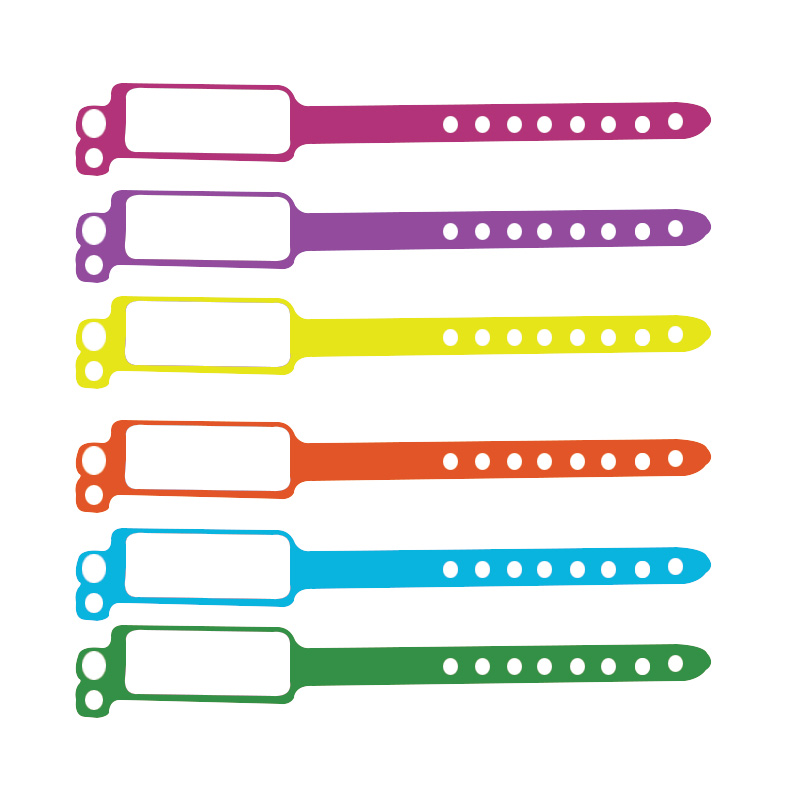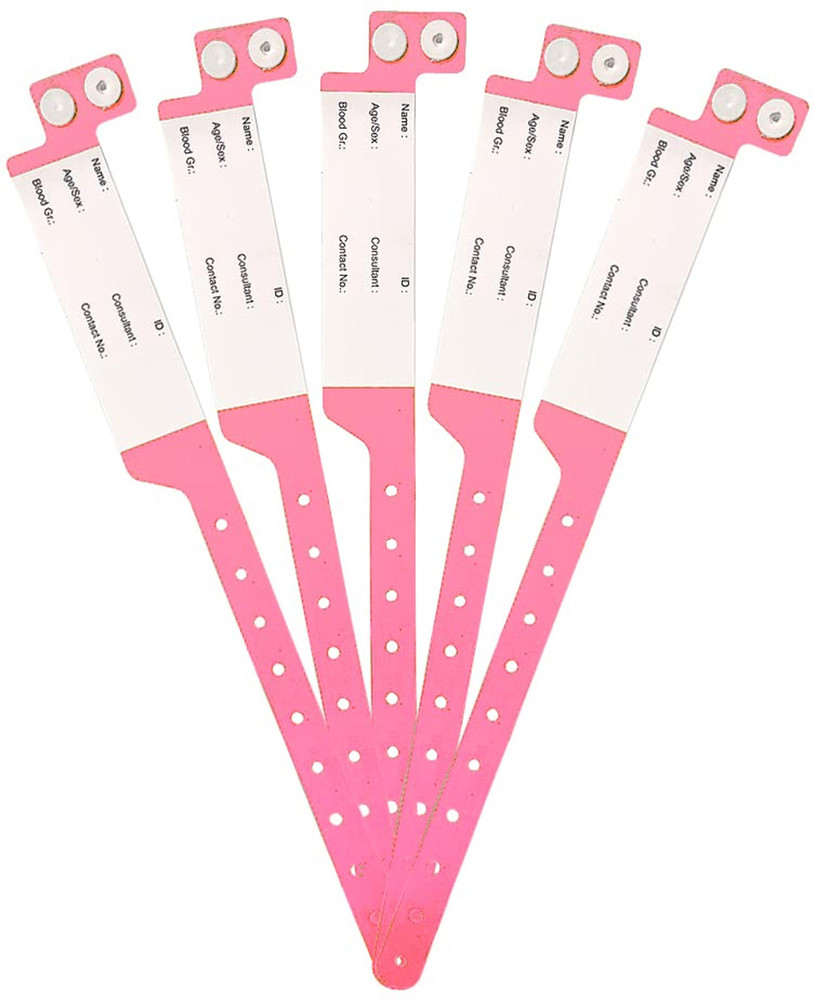Discovering the Different Kinds Of Patient Identification Band Used in Medical Facilities
In the intricate world of medical care, the critical duty of Patient Identification bands usually goes unnoticed. These bands, differing from straightforward paper wristbands to innovative RFID bands, develop the backbone of Patient safety and security protocols, guaranteeing precision in Patient Identification. The vast variety of these bands, each with its distinct benefits and limitations, is typically forgotten. As we navigate through this topic, one may get understanding into the refined complexities and critical relevance of such bands in clinical centers.
Recognizing the Relevance of Patient Identification Bands
While they might seem like mere devices, Patient Identification bands play an important role in medical centers. These bands offer as a critical tool for validating Patient identity, preventing medical errors related to misidentification. Patient Identification bands additionally help in simplifying management jobs, ensuring exact record-keeping and payment.
Conventional Paper Wristbands: Their Usage and Limitations
Traditional paper wristbands have been a staple in Patient Identification throughout various clinical centers. While their usage prevails, they nurture particular restrictions that might influence their efficiency in Patient management. This section will concentrate on the scope of their application and the fundamental drawbacks associated with their usage.
Paper Wristbands: Usage Range
In the realm of Patient Identification, paper wristbands have actually long held an important function. These bands are generally utilized in outpatient setups, where the Patient's remain is momentary. The wristbands contain vital details such as the Patient's name, day of birth, and an unique Identification number. This simple, yet effective system, enables doctor to promptly and precisely identify clients, making certain the appropriate treatment is provided. Paper wristbands are also made use of in emergency circumstances, where fast Identification is extremely important. Their use includes events like blood contribution drives and mass inoculation programs, better highlighting their adaptability. Regardless of developments in innovation, the simple paper wristband stays a cost-efficient and trusted service for Patient Identification in various healthcare situations.
Limitations of Paper Wristbands
In spite of their prevalent use, paper wristbands are not without their disadvantages. Their physical sturdiness is just one of the considerable constraints. Exposure to water, sweat, or rough handling can render them unreadable and even create them to degenerate. Furthermore, paper wristbands typically lack the technological capabilities of more modern alternatives, such as barcoding or RFID chips, restricting their capability to just showing created details. The lack of ability to upgrade or change the data on the wristband is one more shortcoming. In addition, if the info is transcribed, readability can be endangered, bring about prospective misidentification. Lastly, paper wristbands can cause discomfort or skin irritation to some individuals, particularly when put on for prolonged durations.
Barcoded Wristbands: Developments in Patient Identification
While Patient Identification has actually long been a crucial facet of healthcare, the advent of barcoded wristbands signifies a significant leap onward. These bands utilize the simplicity of barcoding innovation, permitting for Patient details to be rapidly scanned and accessed. They boost the speed and accuracy of Patient Identification, decreasing the danger of medical errors related to misidentification.
Radio Frequency Identification (RFID) Bands: an Action In The Direction Of Futuristic Healthcare
The evolution of Patient Identification bands has brought about the appearance of Radio Regularity Identification (RFID) Bands (patient identification band). These cutting-edge tools present essential advantages for healthcare centers, using an extra reliable and highly progressed ways of Patient Identification. The application of RFID in health care is a significant step towards a more futuristic method to Patient administration and security
Recognizing RFID Bands

RFID Bands: Trick Advantages
Welcoming a future where technology and healthcare merge, superhigh frequency Identification bands use a number of key benefits. Primarily, these bands improve Patient safety and security by supplying accurate, immediate Identification, thereby reducing clinical errors. RFID bands can save a substantial amount of Patient information, consisting of medical background and allergic reactions, enabling customized care. They also enhance company website management jobs, as the automated information entry changes hands-on processes, improving effectiveness and decreasing paperwork. RFID bands provide real-time tracking of patients, critical in high-risk environments such as surgical treatment or intensive treatment. Lastly, these bands are resilient and resistant to ecological variables, making certain constant performance. Generally, RFID bands stand for a significant advancement in Patient Identification modern technology, profiting both individuals and doctor.
Executing RFID in Healthcare
These bands give a seamless method to track and recognize individuals, guaranteeing their security and boosting effectiveness in treatment procedures. RFID bands decrease medical errors by providing accurate Patient Identification, which is important in stopping misdiagnosis or incorrect medication management. Thus, the implementation of RFID bands is a substantial action towards boosting Patient safety and security and medical care distribution.

Color-Coded Wristbands: Helping in Quick and Accurate Diagnosis
In the bustling environment of a clinical facility, color-coded wristbands have actually emerged as important tools for swift and exact Identification of an individual's medical condition. These wristbands, worn by clients, bring certain shades that correspond to different medical problems or statuses. For example, red could indicate allergy dangers, while yellow may indicate a fall danger. This system is designed to supply immediate visual signs to doctor, enhancing Patient security and care high quality. In emergency situations, making use of these wristbands allows for fast decision-making. Nevertheless, the performance of color-coded wristbands depends on the uniformity of shade analysis across health care establishments, needing typical requirements for consistent application.
Methods for Efficient Execution and Administration of Patient ID Bands
Accomplishing optimal use read Patient Identification bands necessitates a well-structured method for their application and management. The primary step involves training all health personnel on the relevance of appropriately using and reading these bands. Medical facilities need to systematize the use of ID bands across all divisions, guaranteeing uniformity and reducing disparities. Normal audits needs to be conducted to validate adherence to policies and to rectify any type of incongruities. Patient education and learning is likewise important; patients should understand the function of the bands and the need for their constant wear. patient identification band. Finally, it's necessary to have a backup strategy in position, such as barcode scanning or biometrics, to make certain that Patient Identification is never endangered.
Verdict
Patient Identification bands are critical in clinical centers to make sure safety and accuracy. Effective implementation and administration of these bands can significantly decrease clinical errors, improve efficiency, and boost total Patient care.
These bands, varying from straightforward paper wristbands to advanced RFID bands, form the backbone of Patient security protocols, ensuring precision in Patient Identification.The evolution of Patient Identification bands has actually brought concerning the introduction of Radio Regularity Identification (RFID) Bands. On the whole, RFID bands stand for a substantial advancement in Patient Identification innovation, profiting both people and healthcare providers.
RFID bands minimize clinical mistakes by offering accurate Patient Identification, which is important in protecting against misdiagnosis or incorrect medication administration. Patient education is likewise important; people must understand the function of the bands and the requirement for their constant wear.